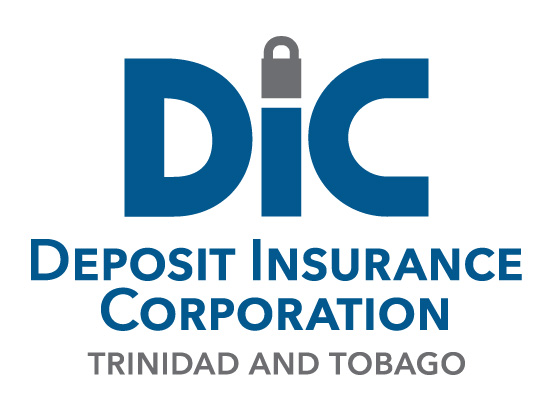- What does “liquidating” a company mean?
- Why does a company go into liquidation?
- What is the difference between a secured and an unsecured creditor, and are there any other kinds of creditors?
- How is a company (financial institution) put into liquidation?
- Why is DIC the liquidator for Clico Investment Bank Limited (CIB)?
- Who pays the costs of the liquidation?
- Why might payment to creditors take an extended period of time?
- How do I prove my legitimacy as a creditor?
- What does the liquidation process involve?
- What is the liquidator’s role?
- How can interested parties ensure that the liquidation process is being handled with due diligence?
- Can the Liquidator communicate directly with the creditors?
- Do some creditors rank higher than others in terms of voting rights?
- Do some creditors rank higher than others in terms of distribution?
- Are payments to creditors made in currency, or are there other forms of payments such as shares or other assets?
- How would payments be made?
- What is a Notice of Intended Dividend?
- How would a creditor be informed of payments to be made in a dividend distribution?
- How may creditors access information on the liquidation’s progress?
What does “liquidating” a company mean?
In its simplest form, ‘liquidation’ refers to winding up a company by selling off its assets and converting them into cash to pay the company’s secured and unsecured creditors in proportion to the company’s confirmed indebtedness to each creditor.
Back to Index
Why does a company go into liquidation?
What is the difference between a secured and an unsecured creditor, and are there any other kinds of creditors?
Secured creditor: Has a registered, secured charge against the assets of the company. Examples are a mortgage or pledge of some kind.
- Unsecured creditor: Does not have a secured charge.
- Employees: Are a special class of unsecured creditors. Employees who have made claims for wages, salaries and/or other entitlements, once accepted by the Liquidator, are given priority over the claims of other unsecured creditors.
The order of priority for payment of dividends is:
- Rates and taxes
- Cost and expenses of winding up
- Preferential debts e.g. wages/salaries, workmen’s compensation/leave entitlement
- Floating charges e.g. debentures (secured charge)
- Ordinary unsecured creditors e.g. judgment creditors, general body of creditors
- Members/shareholders (only when creditors have been paid in full)
Back to Index
How is a company (financial institution) put into liquidation?
Winding up of a company may be either:
- By the Company (voluntary)
- By the Court upon application by:
– The Creditors (involuntary/compulsory)
– By an application of the CBTT acting under its powers (involuntary/compulsory)
Where a company has been placed into compulsory liquidation, the Court may either appoint an Official Receiver, or a Liquidator, or both to wind up the company.
Back to Index
Why is DIC the liquidator for Clico Investment Bank Limited (CIB)?
CIB was a member institution of the Deposit Insurance Fund.
Under S44 of CBTT Act the DIC has the power to act as Liquidator for its member institutions.
By an order of the High Court dated October 17, 2011, Clico Investment Bank Limited was ordered to be wound up and DIC was appointed liquidator.
Back to Index
Who pays the costs of the liquidation?
The costs associated with the liquidation are met from monetizing the company’s assets.
Where the DIC is the court appointed liquidator and the funds of the company are insufficient to meet the costs associated with the liquidation the DIC may revert to the court for guidance and/or release from its obligations especially if the associated costs create an unsupportable burden to the Deposit Insurance Fund.
Back to Index
Why might payment to creditors take an extended period of time?
The liquidator has to take control and then secure, realize and monetize the assets of a company prior to any distribution. The company’s size, composition, complexity and location of the assets, the length of time it takes to liquidate the assets, quality of records and the number of creditors are just some of the elements which can affect when payment is made.
Back to Index
How do I prove my legitimacy as a creditor?
All creditors or their agents must complete a Form 55 – Proof of Debts/General Form by which they are required to prove their debt before the liquidator considers their claim.
All claims should be accompanied by a sworn affidavit or signed before a Notary Public (claims outside of Trinidad and Tobago).
The liquidator may accept or reject the debt, in whole or in part, or request further proof of the debt.
Back to Index
What does the liquidation process involve?
The liquidation process begins with the filing of the winding up petition in Court. When an application is made the Court appoints a liquidator to wind up the company.
Once a company is in liquidation:
- The powers of the directors cease and the liquidator takes charge of the assets of the company; and
- No action or proceeding can be continued or commenced against the company without permission of the Court.
Back to Index
What is the liquidator’s role?
The liquidator has a duty to all creditors, its powers under the Companies Act include but are not limited to:
- Taking control of and realizing a company’s assets in order to distribute the monetized assets to creditors;
- Bringing or defending Court proceedings in the name of the company, to recover debts due to or dispute debts alleged to be owed by the company. This includes bringing a legal action with a view to recovery from directors of the company. S376 CA
- Carrying on the business of the company to the extent that this is necessary for the beneficial winding up of the company.
- Paying debts and compromising/reaching a settlement on claims and liabilities of the company.
- Selling any real or personal property of the company.
- Executing deeds, receipts and other documents in the name of the company.
- Doing all such other things as may be necessary for winding up the affairs of the company and distributing its assets.
In a compulsory winding up, the liquidator’s powers are subject to the control of the Court and any creditor or contributory may apply to the Court with respect to any exercise or proposed exercise of any of those powers.
The liquidator may also apply to the Court for directions on any matter arising under the winding up.
Back to Index
How can interested parties ensure that the liquidation process is being handled with due diligence?
The liquidator files statements of Affairs annually with the Official Receiver and Statements of Accounts semi-annually with the Registrar of Companies. Much of the information regarding the liquidation process, including costs associated with the liquidation, can be found in the Statement of Accounts and by visiting the DIC website.
Back to Index
Can the Liquidator communicate directly with the creditors?
The Liquidator may communicate either individually or collectively with creditors.
The Court-appointed liquidator may call a Creditors’ Meeting to ascertain creditors’ opinions on matters relating to the winding up of the company.
High value creditors of the company may be entitled to request the liquidator to convene a Creditors’ Meeting to put forward a proposal(s) for consideration by all creditors.
If voting is required at a Creditors’ Meeting, only those creditors whose Form 55 Proof of Debt Claims have been admitted either wholly or in part by the liquidator, before the date on which the meeting is to be held, will be entitled to vote.
Back to Index
Do some creditors rank higher than others in terms of voting rights?
Do some creditors rank higher than others in terms of distribution?
This is the general order of priority for payment of dividends (S435 CA):
- Rates and taxes
- Cost and expenses of winding up
- Preferential debts e.g. wages/salaries, workmen’s compensation/leave entitlement
- Floating charges e.g. debentures (secured charge)
- Ordinary unsecured creditors e.g. judgment creditors, general body of creditors
- Members/shareholders (only when creditors have been paid in full)
Back to Index
Are payments to creditors made in currency, or are there other forms of payments such as shares or other assets?
Traditionally, distribution is made in cash. For any other form of distribution, the liquidator would solicit the support of the creditors and the sanction of the Court.
Back to Index
How would payments be made?
The general rules for payment of dividends to creditors are:
- Only admitted claims can be paid;
- All assets must have been realised and all enforceable debts and liabilities proven before a dividend payout is made;
- The liquidator and creditors must clear mutual debts and credits through set-off; (S434 CA imports mandatory set-off rules from S35 Bankruptcy Act Chap 9:07)
- Sometimes, in a lengthy liquidation, an interim dividend payment (of so many cents on the dollar) can be made;
- If 100% payout on claims cannot be made, each unsecured creditor would be paid an equal proportion of the amount owed to the creditor (pari passu).
Back to Index
What is a Notice of Intended Dividend?
This is a formal Notice of the Liquidator’s intention to declare a dividend which is published in the Gazette and newspaper not more than two (2) months before the Liquidator actually declares a dividend. At the same time, the Liquidator must give notice to the creditors mentioned in the statement of affairs who have not proved their debts.
- The Notice must contain the latest date by which all creditors mentioned in the statement of affairs must submit/lodge their Form 55 – Proof of Debt in order to be considered for payment of dividend. This date shall not be less than 14 days from the date of the Notice. (Winding Up Rule 100)
- Creditors who have not submitted/lodged a Form 55 – Proof of Debt by the date specified in the Notice shall not share in the first distribution. (Winding Up Rule 100)
- Creditors whose Form 55 – Proof of Debt are submitted and admitted after the date specified in the Notice will be paid the amounts due to them on the next distribution date.
Back to Index
How would a creditor be informed of payments to be made in a dividend distribution?
The Liquidator shall place a notice of dividend in the Gazette and newspaper and shall also send a notice of dividend to each creditor whose Form 55 – Proof of Debt has been admitted. The notice shall specify how many cents on the dollar will be paid and the date and time for the dividend.
Back to Index
How may creditors access information on the liquidation’s progress?
Creditors may access the Statement of Accounts of the liquidation in progress which are filed semi-annually with the Registrar of Companies.
Relevant web links
- The Deposit Insurance Corporation was established by the Central Bank and Financial Institutions (Non-Banking) (Amendment) Act 1986 Part VB http://rgd.legalaffairs.gov.tt/Laws2/Alphabetical_List/lawspdfs/79.02.pdf#page=44
- The liquidation of a company is governed by the Companies Act (CA) Chap 81:01 http://rgd.legalaffairs.gov.tt/laws2/alphabetical_list/lawspdfs/81.01.pdf
- Form 55: Proof of Debt http://dictt.org/wp-content/uploads/Liquidations-FORM-55.pdf
Back to Index




